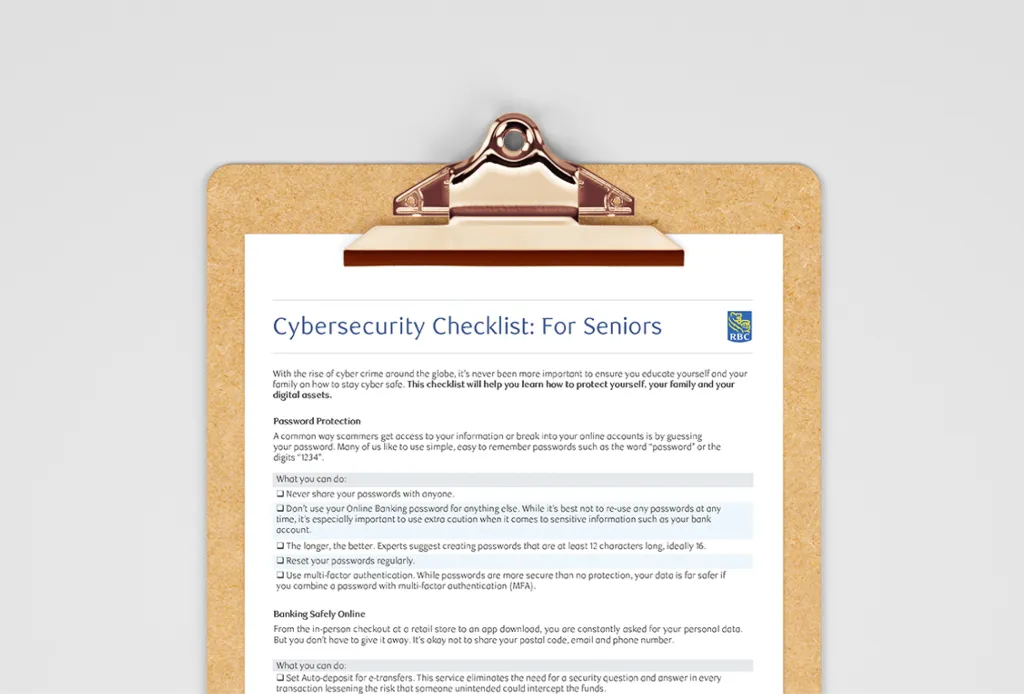Scams and cyber attacks are rapidly evolving, and 2025 proved it. Consumers around the world lost billions of dollars to online crime this year, and scammers are only getting more sophisticated.
Awareness is the first step to staying safe. Here’s a look at the biggest threats affecting people today, how they might evolve over time, and practical steps to stay protected.
AI-powered scams are pervasive
If it felt like scams got more personal this year, you’re not imagining things. Criminals are now using AI to create messages, videos, and phone calls that look and sound real. And, they’re gathering details from social media to add colour and context to communications, making them seem even more legitimate.
Some of the most common tactics include:
-
Hyper-realistic phishing emails: No more clunky grammar, suspicious formatting, or awkward wording. AI has smoothed it all out.
-
Voice clones and deepfakes: Fake calls and videos pretending to be a boss, a bank, or a family member have also received an AI boost.
-
Multilingual scams: AI makes it easy to target people in their native language, making scams even more convincing.
Security researchers expect scams to continue evolving in this way, and forecast a rise in autonomous scams – meaning, systems that can run entirely on their own, sending messages and responding like a human, without any human intervention.
How to stay safe
-
Pause and take a breath before reacting to an urgent-sounding message.
-
Double-check the source and sender of the message through a trusted channel.
-
Watch for strange phrasing, audio glitches, or video mismatches. If something looks off, it probably is.
Ransomware and data-stealing malware
Ransomware remains one of the most significant online threats, locking files and demanding payment to unlock them. But a quieter, faster threat is also on the rise: infostealers. This is malware that slips into your system, grabs your passwords or banking information, and leaves before you notice.
How to protect yourself
-
Keep software updated on all your devices. The latest software has the most up-to-date security patches that fix known vulnerabilities.
-
Use unique, strong passwords for each of your accounts. This way, if one password is stolen, the rest of your accounts aren’t exposed.
-
Turn on multi-factor authentication (MFA) whenever it’s an option. This extra step goes a long way toward keeping your accounts safe.
Cloud security and smart-device weak spots
More of our lives are online than ever before – from cloud storage to streaming services to smart doorbells. The problem is that hackers are aware of this.
Cloud security breaches are increasingly common, primarily caused by misconfigured cloud accounts – meaning, accounts that weren’t properly secured – and poorly protected smart devices that provide hackers with a means of accessing home networks.
When a cloud account is misconfigured, it can accidentally expose sensitive data like names, addresses, or even financial information. Such exposed information can be used for identity theft or fraud, login details can be tested on other websites, and personal data can be used to create convincing phishing attacks.
How to reduce your risk
-
Secure your home Wi-Fi with a strong password. Change those default passwords right away!
-
Check privacy settings on cloud apps and services. Make sure they’re not set to “public”.
-
Keep smart devices and routers updated with the latest software.
Traditional scams are still going strong
Phishing emails, fake tech support calls, and romance scams are still costing people billions. These scams have become much more believable because they’ve also become more personalized – leaked data or social media information is used to make fake messages appear more legitimate.
How to stay safe
-
Be mindful of what you share online. Oversharing on social media can provide scammers with valuable information they can use against you.
-
Share what you know with loved ones about common scams. Seniors, in particular, are vulnerable to scam calls and emails.
-
If you’re a target, report it. When your bank or fraud agencies are aware of the scams that are circulating, they’re in a better position to protect the community.
Identity theft is getting smarter
Identity theft is evolving, as scammers can now fake biometric data – such as a person’s face or voice. Security systems that rely on facial recognition or voice matching are no longer guaranteed to be foolproof. You may see new verification tools – that combine biometrics with other checks – coming soon to boost protection.
Ways to stay ahead of identity theft
-
Monitor credit reports and bank accounts regularly.
-
Set up alerts for unusual account activity.
-
Choose services that offer multi-layered verification.
Online threats are becoming faster, smarter, and more personal. But you can protect yourself. Staying alert, building strong online habits, and using the security tools already built into apps and devices can dramatically lower the risks. While scams may be getting more sophisticated, a little awareness and action can help you stay one step ahead.
This article is intended as general information only and is not to be relied upon as constituting legal, financial or other professional advice. A professional advisor should be consulted regarding your specific situation. Information presented is believed to be factual and up-to-date but we do not guarantee its accuracy and it should not be regarded as a complete analysis of the subjects discussed. All expressions of opinion reflect the judgment of the authors as of the date of publication and are subject to change. No endorsement of any third parties or their advice, opinions, information, products or services is expressly given or implied by Royal Bank of Canada or any of its affiliates.






